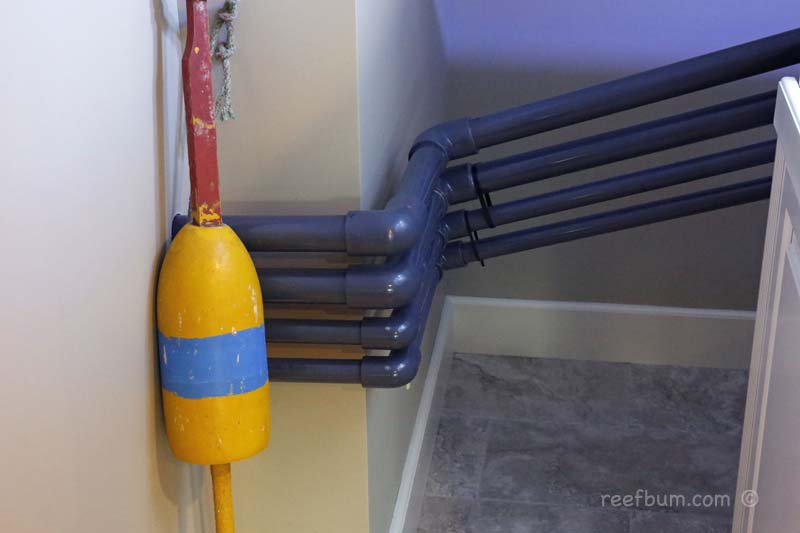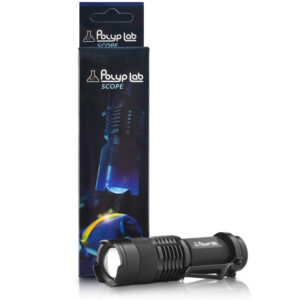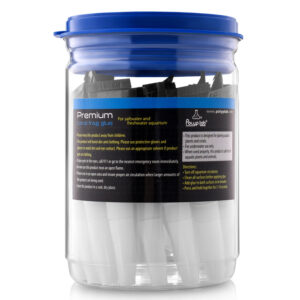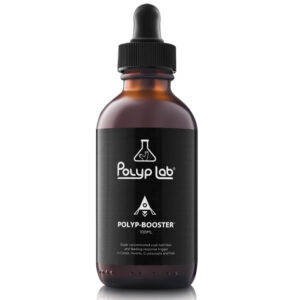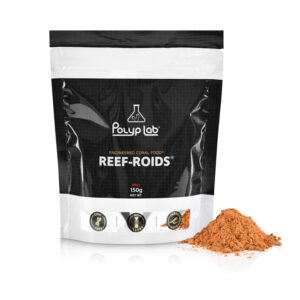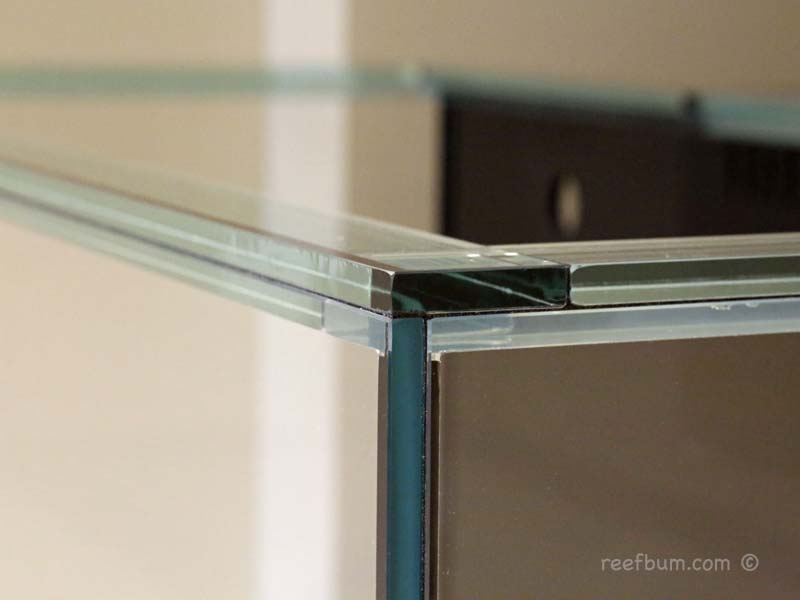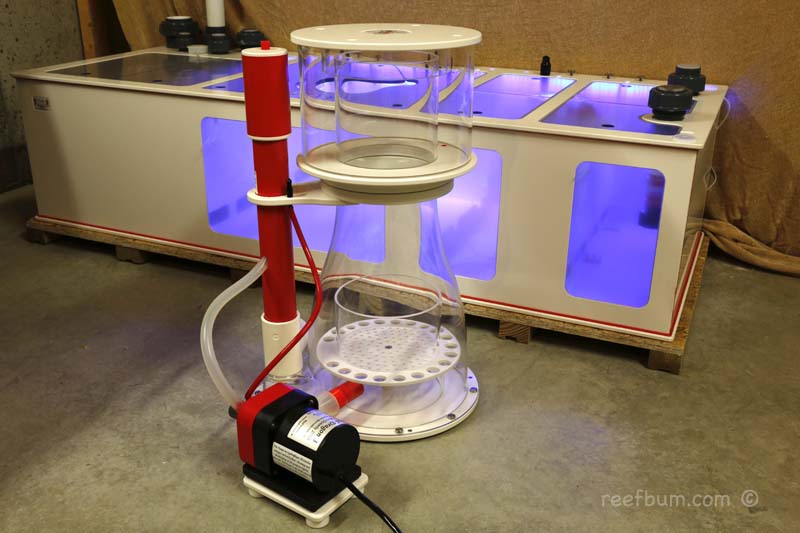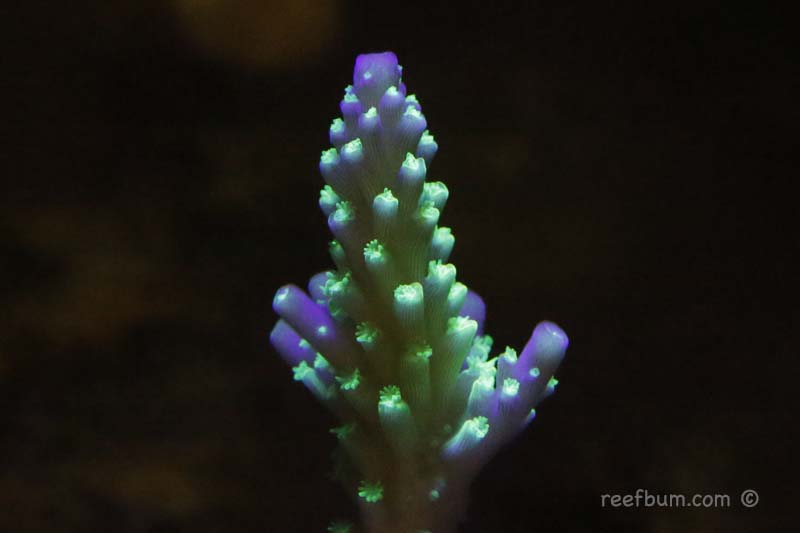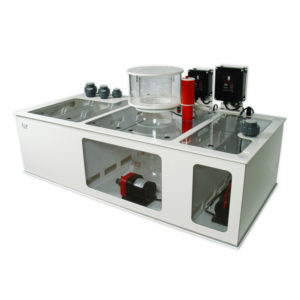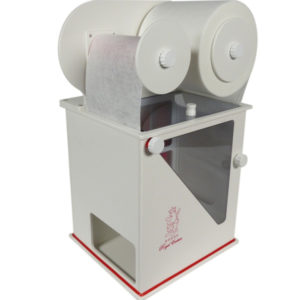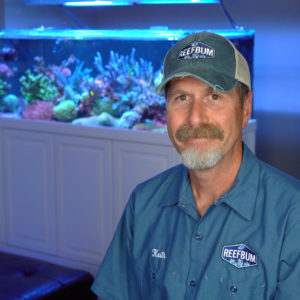It takes a lot of equipment to run a thriving SPS reef tank and that makes it a challenge to fit everything underneath a tank stand. My first reef tank was in an apartment in New York City and I labored to squeeze everything into that confined space. It was a rented apartment so my hands were sort of tied when it came to “customizing” the living space to house equipment away from the tank. Besides more room for equipment, there are a few other reasons why it makes sense to have a remote area for a sump and the rest of the equipment:
- Less risk of water splashing on and damaging electrical plugs and equipment.
- Fewer heat sources underneath the tank (equipment such as pumps and light ballasts do generate heat).
- Less noise in the living area where the tank is located.
- Less water underneath the tank, making it less likely water could damage a wood stand.
- Easier to do tank maintenance.
Expanding Space Around Tank
One potential solution, before taking the step to locate equipment away from the tank, is to expand the current space around the tank. In our first house my tank was in the finished basement against a wall with all of the equipment below the stand. We had plans to renovate the basement so that gave me an opportunity to be creative and do a better job integrating the tank into the living space. It also gave me an excuse to get a bigger tank!
Anyway, the contractor cut a hole in the wall for the new tank and he also created a “closet” behind the tank for all of the equipment. This gave me much more room and it also allowed me to hide all of the equipment. It was a big improvement from my setup before but I still had to keep some equipment such as my RODI unit and reservoir in a separate location.
So what options exist for a remote sump? If you rent a house or live in an apartment you might have your hands tied as they were for me when I entered the hobby. However, some landlords might be flexible so there could be hope.
The Basement Option
One of the best options is to have a remote sump in a basement below the tank. When I lived in Connecticut my tank was located in our living room and I had my equipment underneath in the unfinished basement. Gravity allowed the water to drain downstairs and I simply pumped water back upstairs to complete the cycle. I used two return pumps for additional output for a frag tank downstairs and more power to circulate water in the display. It also provided redundancy in case one of my pumps failed. Plumping with PVC through the floor to the basement was not easy so you do need to have some skill in this area. If not, then seek out a reefing buddy who can help.
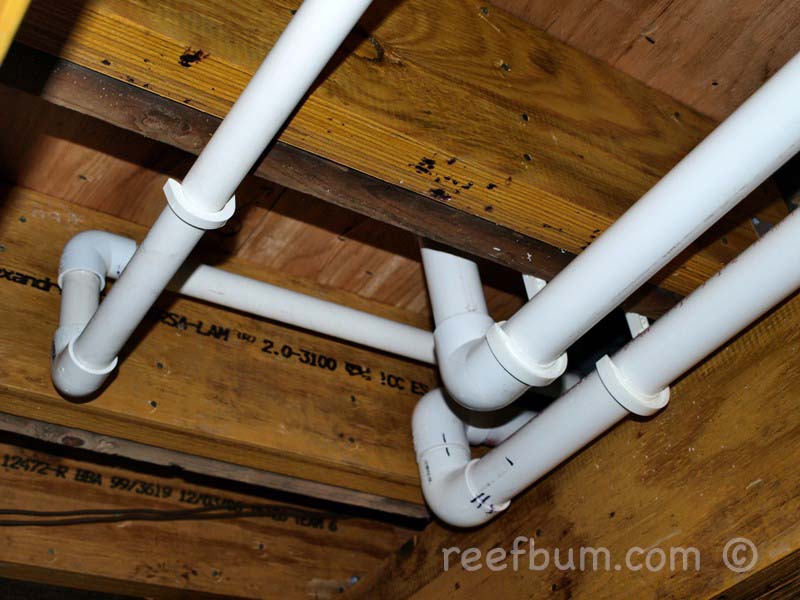
As for expense, it will cost more for this type of setup since more pumping power is required to move water upstairs. However, a big benefit to having all of the equipment in the basement was natural temperature moderation. The basement was much cooler than the house in the summer and warmer in the winter so both the chiller and heater did not have to work as hard, thus saving me money.
Using an Adjacent Room
Another option for a remote sump is to locate it in an adjacent room on the same level as the tank. For my latest setup the equipment is in a workroom next to the room housing the tank. I simply drilled some holes in the wall between the two rooms to accommodate the plumping, with two holes for the drain lines and two holes for the return lines. Aesthetically, my preference was to drill holes in the wall behind the tank but that was not possible so I had to use the side wall. My plan was to cover up the pipes but the industrial look was kind of cool so I decided to leave them out in the open.
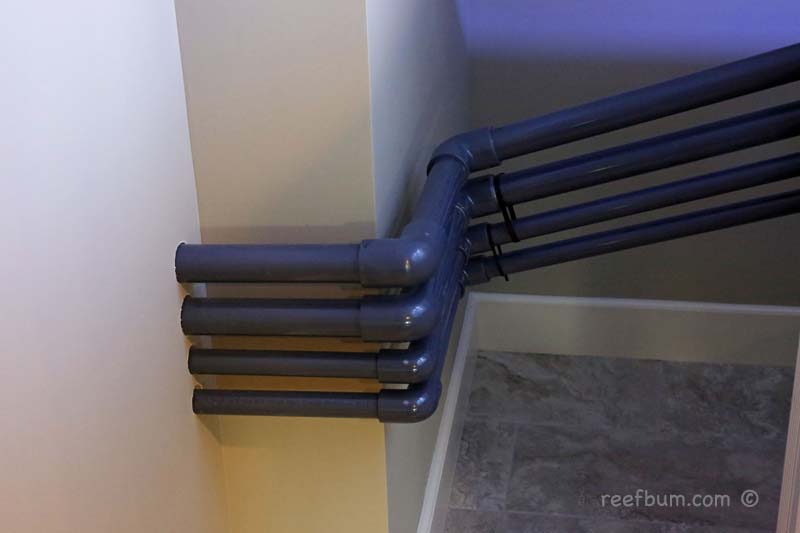
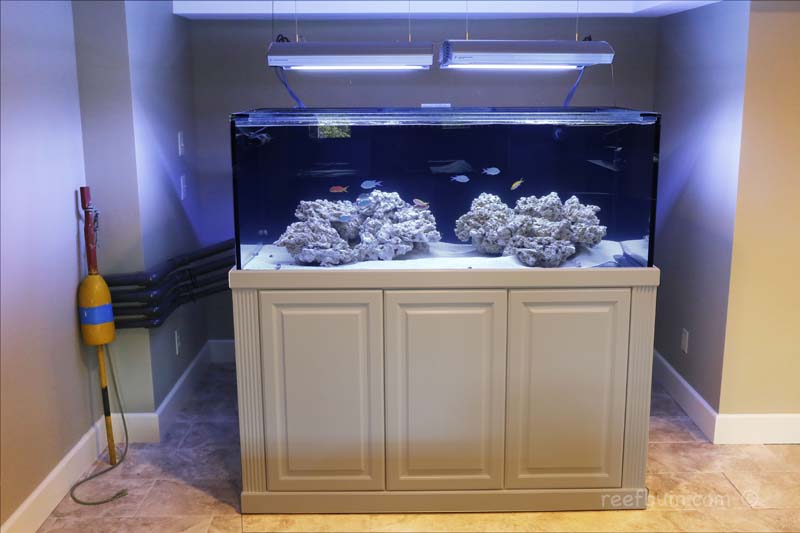
Height & Distance Considerations
The trick in using an adjacent room is to make sure the sump is lower than the tank in order for gravity to do its job. The farther away the tank, the harder it becomes to employ this method. My sump is about 15 feet away from the tank and the top is about 16 inches off of the ground. The bottom of my external overflow is 52 inches off the ground so I had about three feet to play with to plumb down to the sump.
A garage is an another option to locate a sump but that is limited to warm weather climates. Ultimately, it comes down to personal preference when designing a plumbing solution that is both practical and pleasing to the eye.
Additional Resources
If you would like some help with a new tank build, including help designing a custom aquarium, or help re-configuring your current setup then you can visit this page for more information. And if you are looking to add some equipment, I do sell GHL, Pax Bellum, Reef Octopus Calcium and Kalk Reactors and Royal Exclusiv products, including Dreamboxes, which is the equipment I use and recommend. I also sell Reef Brite metal halide and LED fixtures as well as Maxspect & IceCap Gyres.
As for additional insights and information, please explore my many other reef tank and SPS related articles as well as my YouTube channel. For an even deeper dive into reef tank care you can check out my Reef Keeping Master Class. This online course is an immersive and one of a kind educational tool designed to help reef aquarium hobbyists build and maintain a beautiful SPS reef tank. The course is a series of video presentations with some supplemental video from my YouTube channel. There are also quizzes to help students retain and understand the information presented in the course.
Need some frags…..I can help with that as well 🙂 Please visit my SPS Frag store to see what is available.

